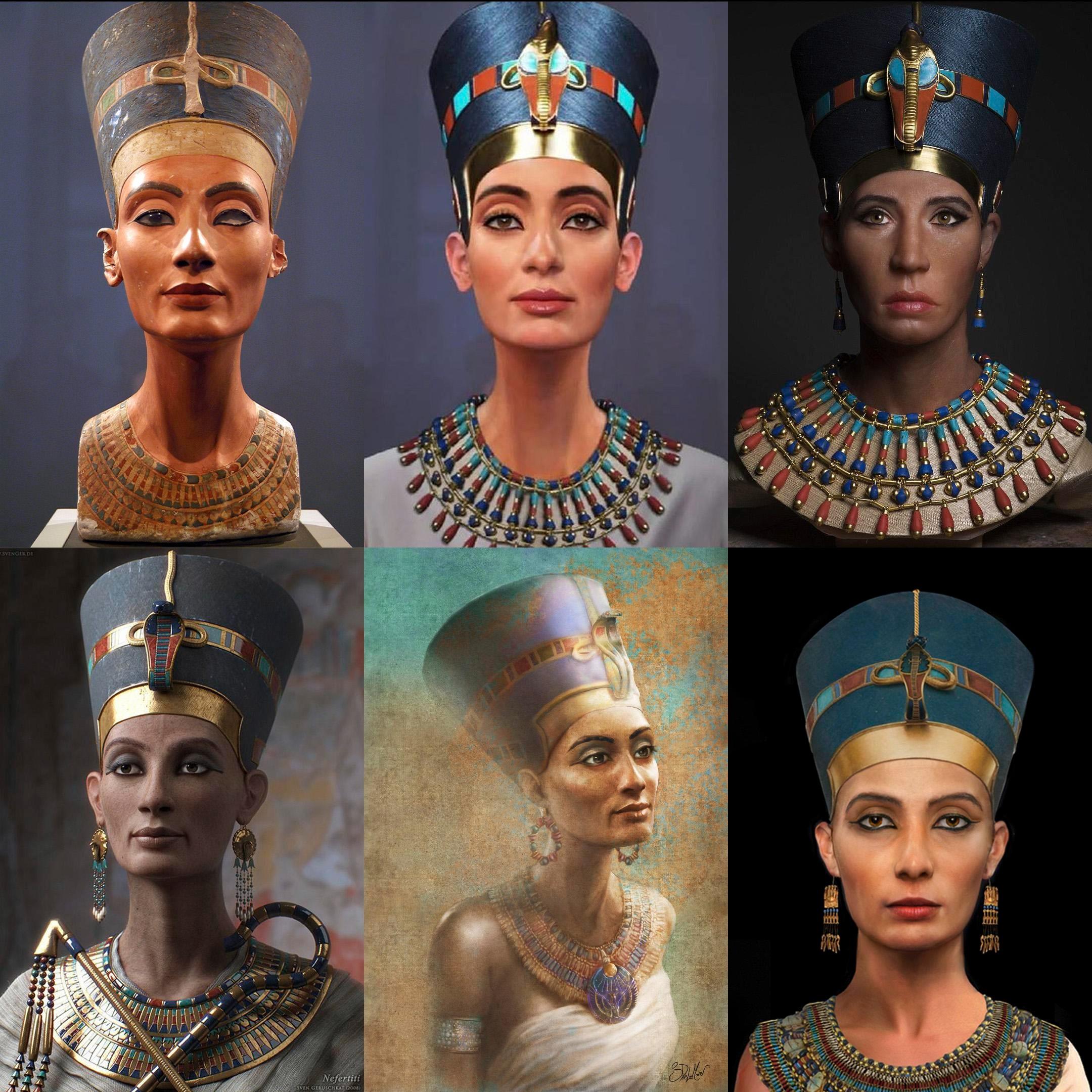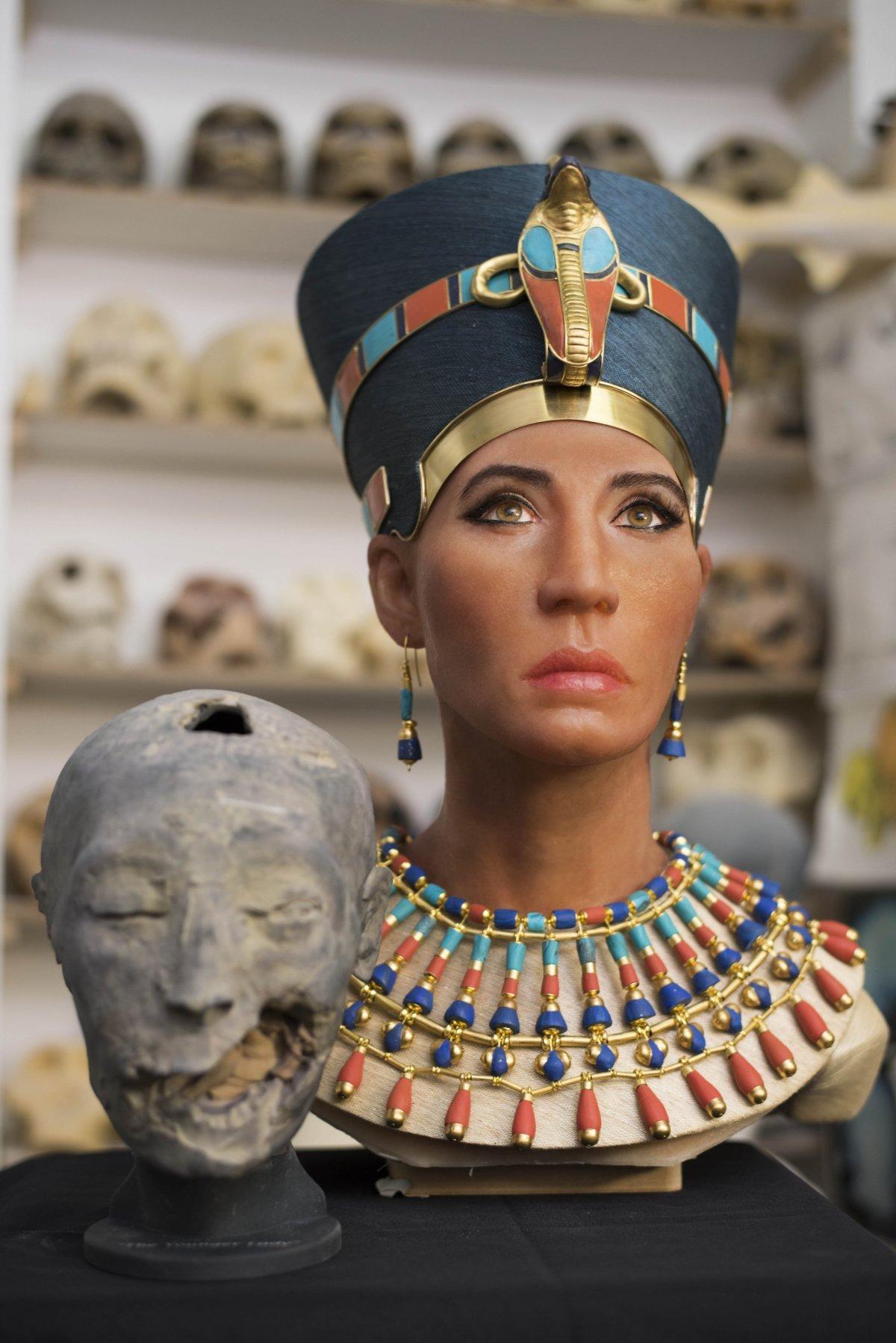Ancient Egyptian Queen: Mummy of Queen Nefertiti Brought to Life with Controversial Light Skin in 3D Scan
The face of Queen Nefertiti, who may have been King Tut’s biological mother, will be revealed on the Travel Channel’s Expedition Unknown, airing Wednesday night. The face is the result of the latest 3-D imaging technology that used the mummy’s facial structure to bring the 3,400-year-old queen to life, but it is the sculpture’s skin color, not its cheekbones, that has generated the most controversy.

To create the bust of the ancient queen, a team of scientists at the University of Bristol in England digitally mapped the face of a mummy known as “The Younger Lady.” The mummy was found in 1898 and is believed to belong to Queen Nefertiti, but this was never proven. The mummy’s face was then digitally mapped to create an accurate facial construct for the bust. Paleoartist Elisabeth Daynes then recreated the Queen’s face on the bust, a painstaking process that took around 500 hours of work, a statement on the TV show reported. By comparing the bust to historical images of Nefertiti, the researchers were able to prove that the “Younger Lady” mummy was indeed the famous queen.

“This extraordinary face appears to be consistent with ancient depictions of Nefertiti,” Aidan Dodson, an Egyptologist at the University of Bristol who was involved in the project, said in a statement. “It is extraordinary. Taken together with the latest readout of the genetic data, this provides us with really exciting evidence that the Younger Lady mummy is none other than Queen Nefertiti herself.”
The programme focuses on investigating three of the most powerful women in ancient Egyptian history: Hatshepsut, Cleopatra and Nefertiti, a statement on the programme said.
Related: Ancient Egyptian pyramidion found next to largest obelisk hints at existence of lost queen’s chamber
According to The History Channel, Nefertiti was queen from 1353 to 1336 BC and may have even ruled Egypt after the death of her husband, Pharaoh Akhenaten. Her full name, Neferneferuaten, means “beautiful are the beauties of the Aten, a beautiful woman has come,” a tribute to both the chief Egyptian god Aten and the queen’s renowned beauty.
The 3D images were only able to copy the mummy’s facial structure, other features such as skin and eye colour were up to the artist’s interpretation. Many soon took to Twitter angry at the artist’s decision to make Nefertiti so light-skinned.
Since Nefertiti lived long before the age of photography, there is no way to know the exact skin tone of the ancient queen, although the most famous bust depicting the queen, believed to have been created in 1345 BC, depicts a darker monarch.
Regardless of the skin tone controversy, the new bust is being celebrated for its detail in other aspects of accuracy, such as the depiction of the queen’s muscle tone and the depth of her skin tissue. Combined, these details reveal the face of one of the most influential and well-known women in world history.
The facial reconstruction of the “Younger Lady” mummy next to a three-dimensional replica of her head created from a digital mapping photograph by Elisabeth Daynès in collaboration with Travel Channel’s “Expedition Unknown” and Josh Gates. Photo courtesy of Travel Channel.






